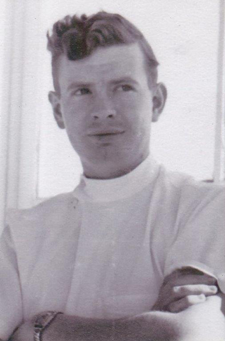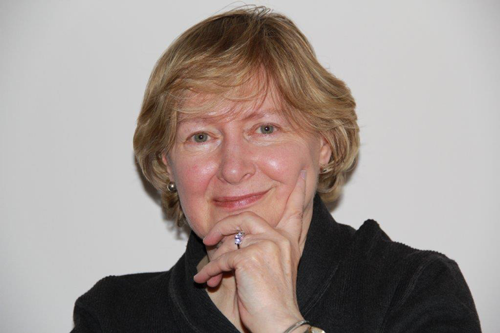Spring 2016 (Volume 26, Number 1)
Reflections on Rheumatoid Hands
By Catharine Dewar, PhD, MD, FRCPC
Download PDF
 
1922 - 2015
To the Editor of The Journal of Rheumatology (JRheum):
Last week I saw a patient for the first time since she started her biologic drug. She was very emotional as she described sitting down at the piano bench and picking out a favorite piece of music. She began to play and it was difficult for her, but she blamed that on lack of practice for more than five years. Hearing the piano come alive again, she was overwhelmed with emotion, and that is what she was trying to convey to me. I glanced at her hands and she was “wringing” them and abducting and flexing all her fingers, something she had not been able to do painlessly for a very long time. She was reliving the rebirth of her hands. It is no wonder she was close to tears as she thanked me for my clinical gifts. This brought to mind my mother’s hands, and her own love of classical music.
My mother was Helen Catherine Howard, and she died in 1999. She developed rheumatoid arthritis (RA) at age 66, and like many patients who have medical family members, she “didn’t read the textbook” when she challenged my diagnostic skills as a newly credentialed rheumatologist in 1990. She presented with Guyon’s canal syndrome and Achilles enthesopathy, a most unusual and definitely
asymmetrical pairing. Discussions and examinations ensued and eventually, after many months, it became painfully apparent that she had become “a rheumatoid.”
Her beautiful hands deteriorated in a shocking fashion in fewer than nine years. Even cutting an onion became impossibly painful for her. My brother said that she lamented, “I killed myself,” after overhearing a discussion about her chest radiograph. She blamed no one but herself for developing lung cancer after decades of smoking. I knew that cigarettes were also strongly linked to RA,1 but I never shared that with her; she was already dealing with enough pain mentally and physically. She went on to survive lung cancer twice within nine years, sequentially in each upper lobe. She quit smoking the night of her first lobectomy, but this meant she gave up all rituals and behaviors associated with cigarettes including coffee, newspapers with crossword puzzles, and the piano. Like the Polonaise that I remember her playing,2 she was heroic; she never complained even as she observed the destruction of her hands.
Sadly, she had begun smoking in her 20s and the cigarettes were a “gift” to her for working in a war factory, making powdered eggs for the troops. She had a marvelous sense of humor and I understood why she never liked eggs, after cracking open one too many “stinkers.” In the 1940s cigarettes were just as addictive, but the US Surgeon General’s warnings about the health risks were years in the future.3
I compare my mother’s journey and the loss of her hands to the startling success stories I have had with “rheumatoids” treated with biologics. That is the saddest thought — that my own mother could have been spared the indignity of becoming housebound and disabled had she lived just a few months longer. She would have experienced “the biologic era.” Ironically, I published my research in the field of cytokines and patients with RA a year before she developed her second lung tumor and a few years before her death.4 Her remaining lower lobes were further compromised by prednisone and she rapidly succumbed to community-acquired pneumonia. All of the traditional RA remittive drugs had failed her, and her treating rheumatologist resorted to steroids to ease her suffering. She died far too young at age 74. Her husband, my father, carried on without her until he died, on August 19, 2015, at age 93. He was one of Western Canada’s first certified rheumatologists.5 He trained with Philip Hench at the Mayo Clinic in the early 1950s when cortisone was first discovered and promoted as the “cure” for RA.6 Dad hated to see the problems prednisone caused his wife, but he understood the futility of her situation. My father lived his final years in his own heroic fashion and he too never complained…
but he never had any problems with any of his joints.
My mother was a great role model for a rheumatologist husband and daughter. This poem is dedicated to my mother and all “rheumatoids” who suffered with painful hand disability and deformity before the biologic era.

Dr. Catharine Dewar.
My Mother’s Hands
I see the tendons bounce and dance
then disappear,
floating across the metacarpals
whose heads sway in gentle rhythm.
I’m spellbound by your loving hands
as I watch you play Chopin’s Heroic Polonaise.
Your fingers come alive
stretching and yawning
across the octaves,
mocking the demands of the notes.
I see your hands floating lightly
embracing the blacks and the whites,
allowing for the differences
of all participants.
Essential elements
to the composition,
the music,
and the gifts
of your life.
References
1. Voigt LF, Koepsell TD, Nelson JL, Dugowson CE, Daling JR. Smoking, obesity, alcohol consumption, and the risk of rheumatoid arthritis. Epidemiology 1994; 5:525-32.
2. Chopin’s Polonaise in A-flat Major, Op. 53, the “Heroic” Polonaise. To hear this 1842 composition by Chopin, visit www.chopinproject.com.
3. Winkelstein W Jr. From the editor: the surgeon general’s report on smoking and health (sic). Am J Epidemiol 2002; 155:1142.
4. Dewar CL, Harth M. Superoxide production from cytokine-treated adherent rheumatoid neutrophils. Clin Invest Med 1994; 17:52-60.
5. Ryan JP. History of rheumatology in southern Alberta. CRAJ 2015; 25:20-1.
6. Lloyd M. Philip Showalter Hench 1896–1965. Rheumatology 2002; 41:582-4.
Acknowledgement
I am forever indebted to my father, the late Dr. David Lloyd George “Red” Howard, who was my first rheumatology mentor.
Catharine Dewar, PhD, MD, FRCPC
Head,
Division of Rheumatology,
Department of Medicine,
Lions Gate Hospital
North Vancouver, British Columbia
Reprinted with permission from Dr. Catharine Dewar and The Journal of Rheumatology. Dewar C. J Rheumatol 2015; 42(11). All rights reserved. |